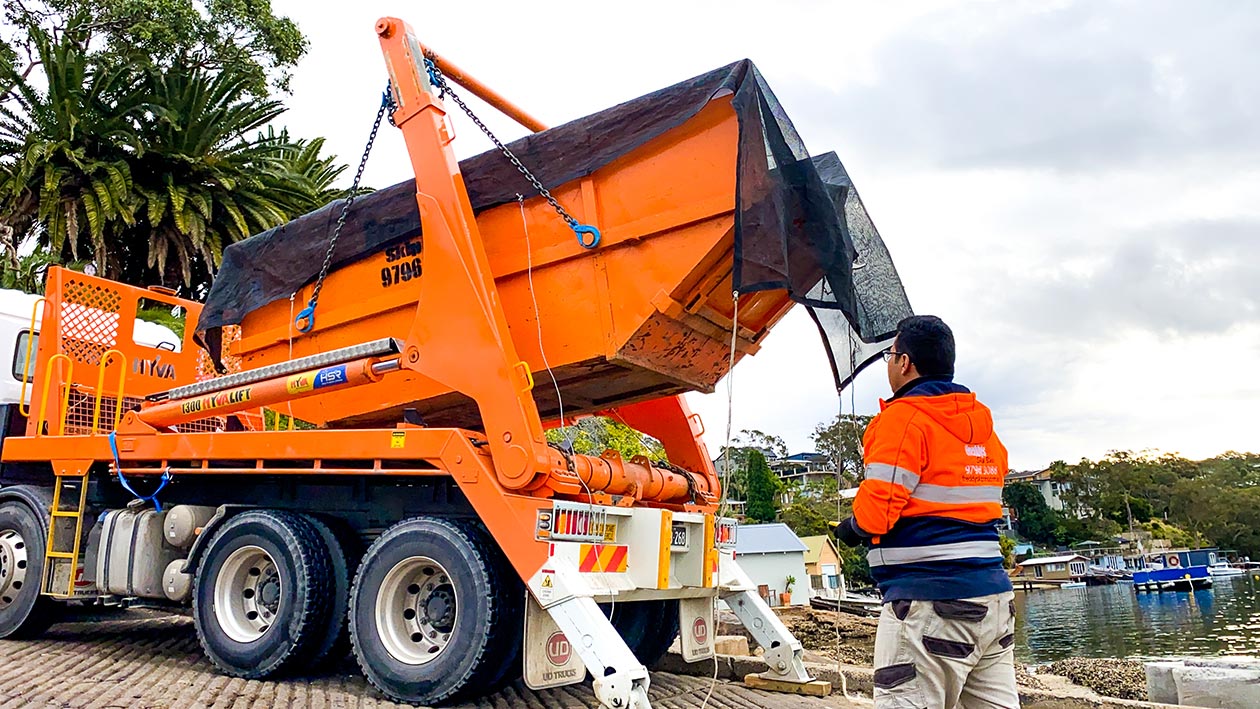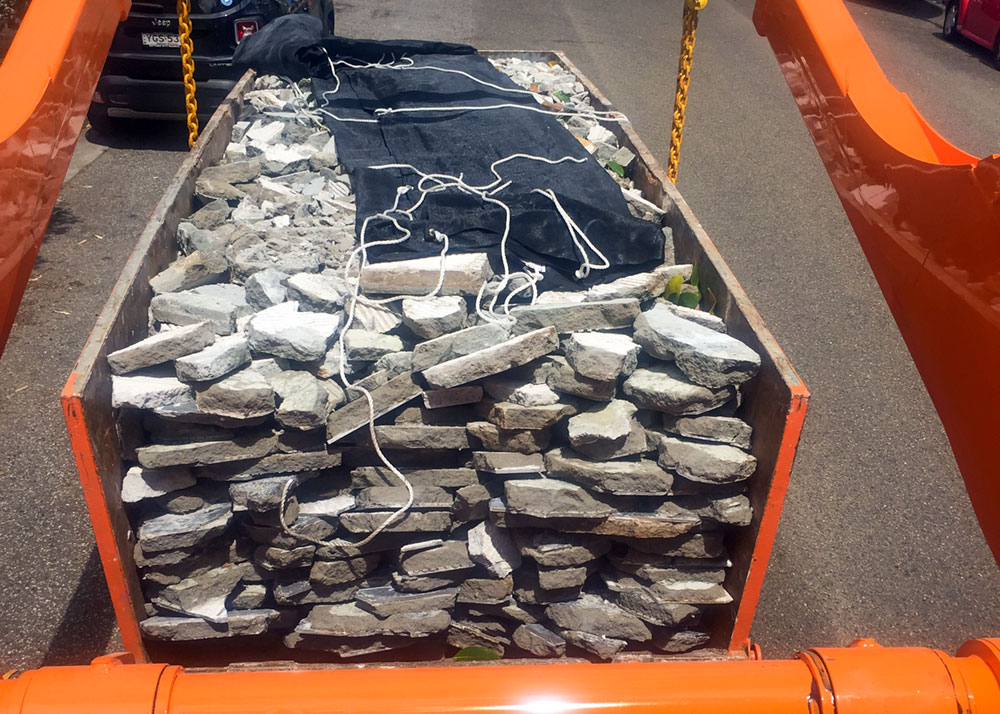How To Load Your Skip Bin Correctly

Filling a skip bin might seem straightforward, but doing it correctly can save you time, money, and even prevent safety hazards. This guide will equip you with the knowledge to become a skip bin loading pro, because maximising space and ensuring safe collection leads to a smooth and successful waste disposal experience.
Benefits of Loading Skip Bins Correctly
Taking a strategic approach to loading your skip bin goes beyond simply throwing things away. Here are some key benefits that will make the entire process smoother and more successful:
- Save Money: Skip bin rental companies typically charge extra fees for bins overloaded beyond their designated capacity. By strategically loading your bin to maximise space, you can avoid these unwanted charges and get the most out of your rental period.
- Safety First: Improperly loaded bins can be a safety hazard for the collection crew and your property. An unevenly distributed load can cause the bin to tip over during transportation, potentially injuring workers or damaging your driveway or surrounding areas. Following proper loading techniques ensures a stable bin for safe and efficient collection.
- Streamlined Efficiency: A well-organised skip bin is easier and faster to collect. Collection crews appreciate that bins are loaded with consideration, as they minimise the risk of items falling out during transport and allow for a quicker process. This translates to a smoother experience for you, avoiding delays during pickup.
Step-by-Step Guide to Skip Bin Loading Like a Pro
Transforming yourself from a skip bin novice to a loading pro is easier than you think! Follow these steps, complete with helpful visuals, to ensure a safe, efficient, and space-maximising experience:
- Laying the Foundation: Start by placing flat, heavy items like timber planks, sheet metal, or concrete along the bottom of the bin. This creates a solid base that can support the weight of additional items without creating air pockets.
- Conquering Bulky Items: Next, tackle bulky items like furniture, appliances, or large branches. Consider disassembling furniture, if possible, to create smaller pieces that fit more efficiently. For oddly shaped items, strategically rotate them to maximize space utilization.
- Filling the Gaps: Once the bulky items are in place, use lighter materials like cardboard boxes, garden waste, or small bagged items to fill any gaps. Flatten cardboard boxes to minimise wasted space. Remember, strategically placing lighter items around heavier objects creates a stable and balanced load.
- Safety First: Always prioritise safety when loading your skip bin. Wear sturdy work gloves to protect your hands and lift correctly to avoid injury. If an item is too heavy to lift on your own, enlist help or break it down into smaller pieces.
- Distributing Weight Evenly: As you fill the bin, distribute weight evenly across both sides to prevent tipping. Avoid overloading one side with heavy objects. If unsure, alternate placing heavier and lighter items on opposite sides to maintain a balanced load.
- Lighten Up Top: Finally, for the finishing touch, use lightweight, fluffy items like pillows, clothes, stuffed animals or other types of household waste to fill the remaining space. These items easily conform to leftover gaps and won’t cause weight distribution issues.
Pro Tips for Maximising Space: Become a Skip Bin Tetris Master!
Now that you’ve grasped the essential loading techniques let’s delve into some pro tips from the experts to maximise your skip bin’s capacity truly:
- Folding Frenzy: Cardboard boxes are notorious space wasters. “At Freddy’s Skip Bin Hire, we always advise our clients to flatten those cardboard boxes!” says Fred Polimeni, the owner. Break down boxes and fold them flat to create a more compact layer that fills gaps efficiently.
- Can Crusher: Metal cans take up a surprising amount of space. “Dedicating a few minutes to crushing your aluminium cans can significantly increase your bin’s capacity,” suggests Fred. A simple can crusher is handy, or you can stomp on them carefully with your foot.
- Furniture Flexibility: Disassemble furniture whenever possible. “Taking apart furniture like tables and chairs before tossing them in the skip bin frees up a tremendous amount of space,” Freddy explains. This lets you fit more items into the bin, avoiding bulky pieces and creating air pockets.
Remember, a little planning and strategic placement go a long way in maximising your skip bin’s potential. Read our skip bin placement guide if you want to know more about where your bin should be delivered. Following these pro tips will surprise you with how much more you can fit in!

This customer went the extra mile to ensure they maximised their space with a perfectly loaded skip bin.
The Importance of Balanced Loading: A Safety Reminder
Ensuring safe and efficient skip bin collection starts with how you load the bin. An often overlooked aspect of proper loading is weight distribution. According to a report by the Department of Infrastructure and Transport, South Australia, an incident occurred where uneven weight distribution in a skip bin caused it to tip over during collection [1].
This event highlights a critical safety concern. An unstable bin can topple over, potentially injuring collection crew members or damaging property.
Proper loading techniques can prevent mishaps and ensure a smooth and safe skip bin experience. Distributing weight evenly throughout the bin is critical. Avoid overloading one side with heavy objects, and strategically place heavier and lighter items to create a balanced load.
Restricted Items and Skip Bin Sizes
While skip bins offer a convenient solution for general waste disposal, it’s important to remember certain items are strictly prohibited. These restrictions are in place to ensure safety, take into account environmental considerations, and responsible waste management.
Keeping it Clean and Safe: Skip bins do not permit hazardous materials, liquids, and food waste. This includes asbestos, paint, chemicals, oils, and leftover food scraps. For a comprehensive list of restricted items, please refer to our detailed waste types guide. Following these guidelines ensures the safety of our workers and prevents potential environmental hazards.
Finding the Perfect Fit: Skip bins come in various sizes to accommodate project needs. The loading technique might differ slightly depending on the bin size. For smaller bins, maximising space by strategically placing heavier items on the bottom and lighter items on top is crucial. Larger bins offer more flexibility, allowing for a layered approach with a wider variety of materials.
If you have any questions about restricted items or finding the right skip bin size for your project, don’t hesitate to contact our friendly staff at Freddy’s Skip Bin Hire. We’re here to help you navigate the waste disposal process smoothly and efficiently.
Source:
[1] Department of Infrastructure and Transport, South Australia. “23_HSEQ_Lessons_Learned – Skip Bin Loading Incident” (PDF). https://www.dit.sa.gov.au/_data/assets/pdf_file/0020/528023/23_HSEQ_Lessons_Learned-_Skip_Bin_Loading_Incident.pdf Page 2. Accessed March 13, 2024.
We are proud to support:











